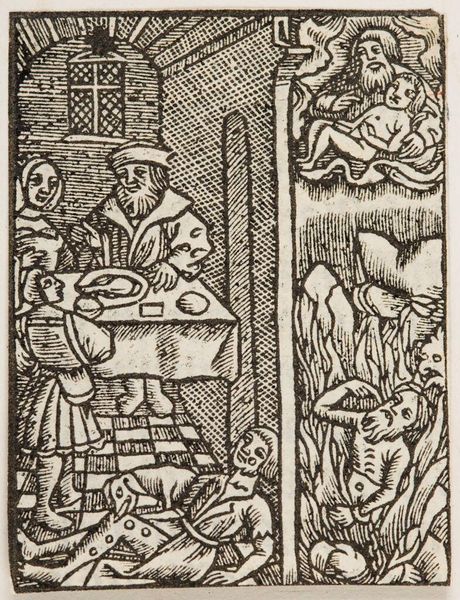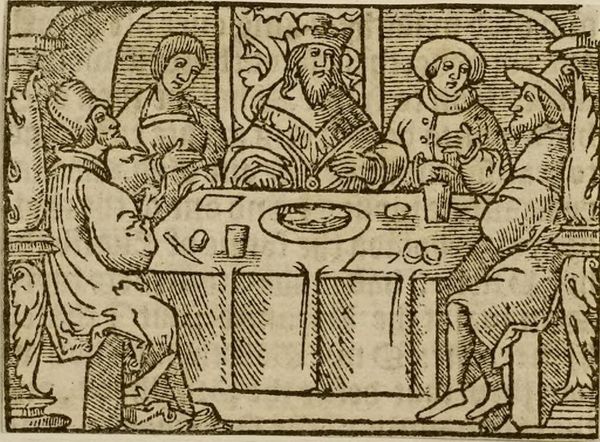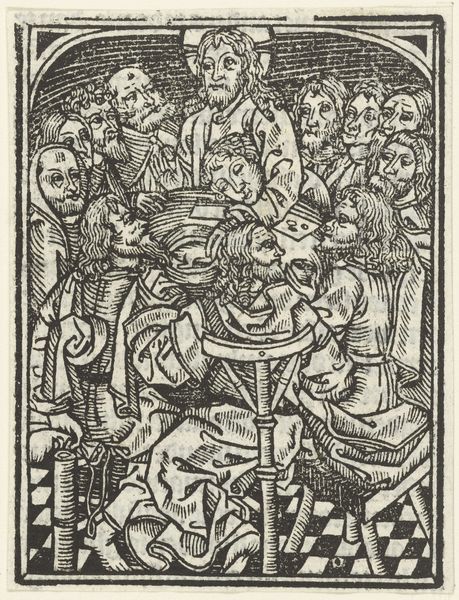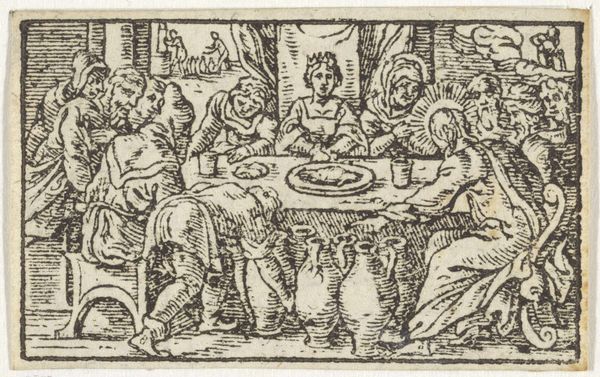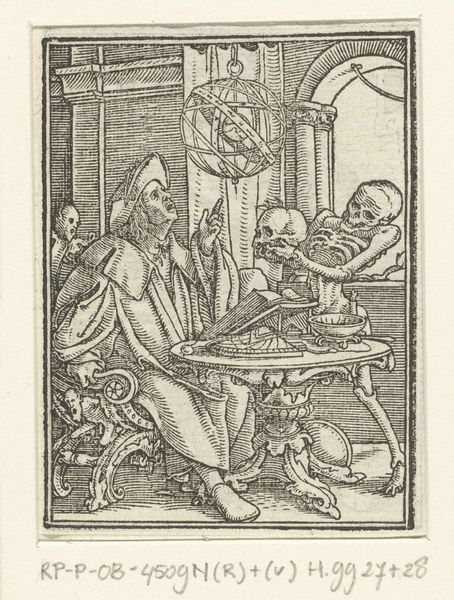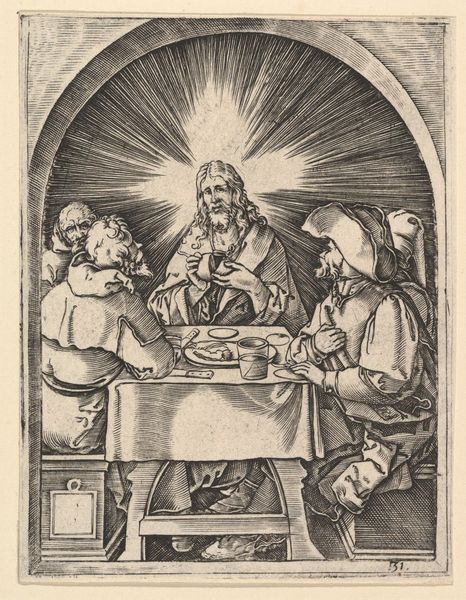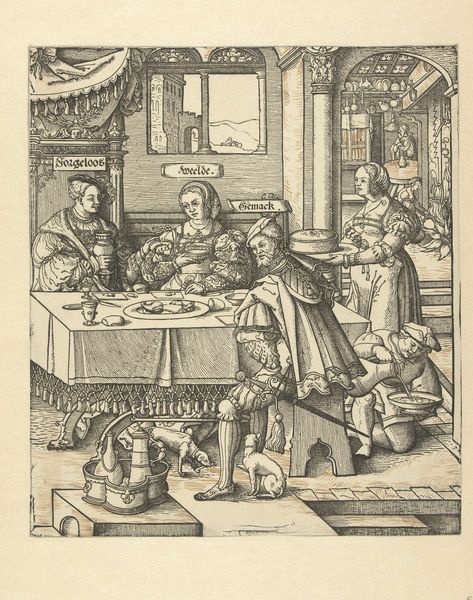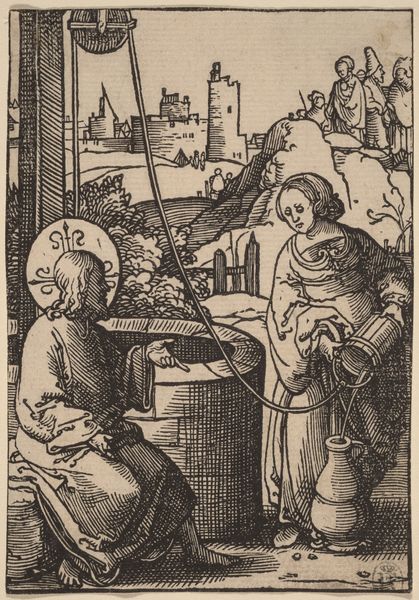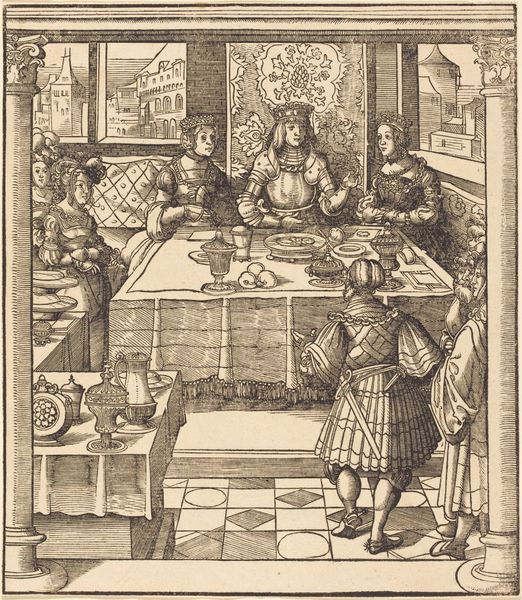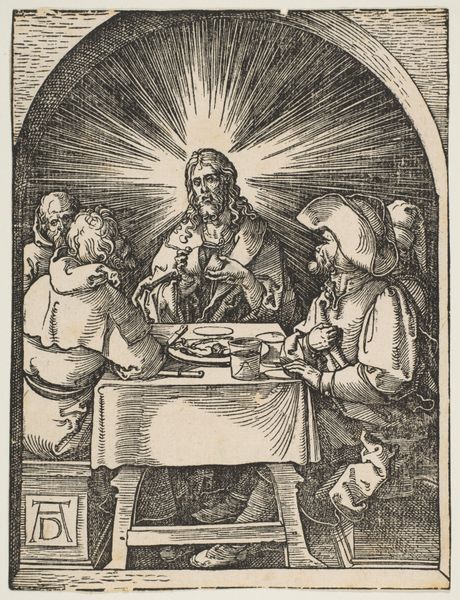
drawing, print, ink, woodcut, engraving
#
drawing
#
medieval
#
pen drawing
# print
#
pen illustration
#
old engraving style
#
figuration
#
ink line art
#
ink
#
pen-ink sketch
#
thin linework
#
woodcut
#
line
#
pen work
#
genre-painting
#
history-painting
#
northern-renaissance
#
engraving
Dimensions: height 90 mm, width 68 mm
Copyright: Rijks Museum: Open Domain
Curator: Here we have a woodcut, "The Supper at Emmaus," crafted between 1490 and 1503 by the Master of the Delbecq Schreiber Passion. The artwork is realized in ink on paper. What strikes you about it initially? Editor: Well, for starters, that checkerboard floor feels awfully modern for a scene that's supposed to be all Biblical and serious. It throws the whole thing off balance, like a joke someone forgot to tell the punchline to. Curator: Indeed. The checkerboard pattern creates an almost disorienting spatial effect, contrasting with the figures' static and frontal poses. The stark black and white of the medium lends itself to high contrast and the definition of form, emphasizing line over volume. Note the deployment of line to create shading. Editor: Right, like hatching gone wild! It gives everything this nervous energy, as if the table itself is vibrating with anticipation. I mean, look at the eyes on those figures, all wide and intense. Something big is about to happen, you can just feel it, even though they are literally just having dinner. Curator: Semiotically speaking, we can interpret the central placement of the roasted bird, which some suggest is a peacock due to it’s visual appearance, as a symbolic representation of the Eucharist. Moreover, the arrangement of the figures around the table constructs a narrative focal point that draws the eye toward the spiritual significance of the event, with Christ blessing the food. Editor: Okay, okay, Eucharist this and semiotics that. But let’s not forget this is just a bunch of lines on paper trying to tell a story. And what a story! A resurrected dude showing up for dinner unannounced? It’s like the ultimate surprise visit! The bird just feels like some awkward Thanksgiving dinner where nobody knows what to say. Curator: Perhaps. However, by understanding its art historical context within the Northern Renaissance, the function of the composition, which arranges elements like the checkerboard floor to convey specific meanings or symbolic relationships to viewers of the time, adds additional interpretative context. Editor: You know, for something made of such rigid lines, it manages to hint at something beyond the surface. Like there’s more to this meal than meets the eye… or the stomach. Curator: Precisely, the engraving allows the viewer to contemplate and feel a sense of revelation even in so intimate and humble of environments as a simple supper.
Comments
No comments
Be the first to comment and join the conversation on the ultimate creative platform.
